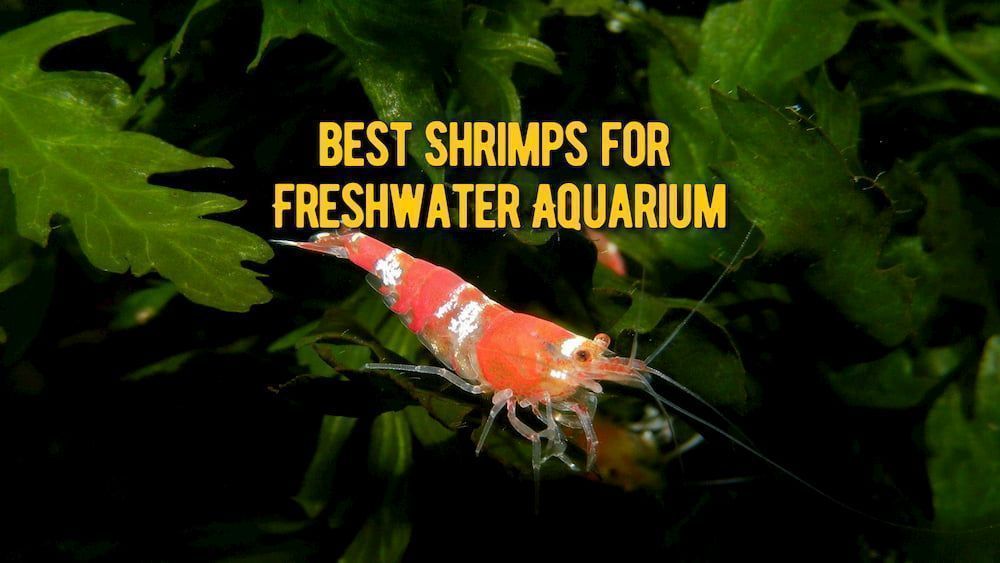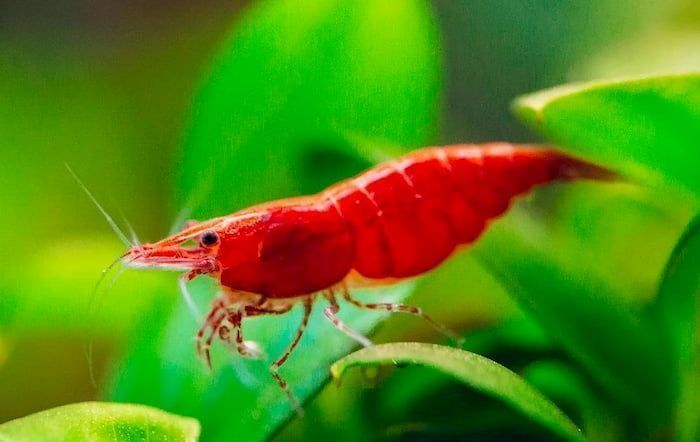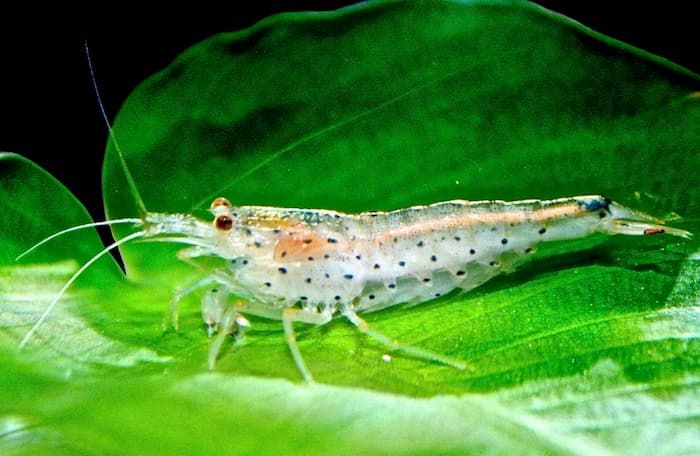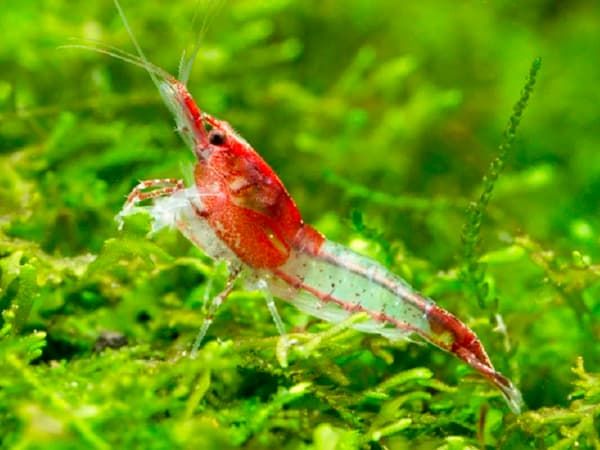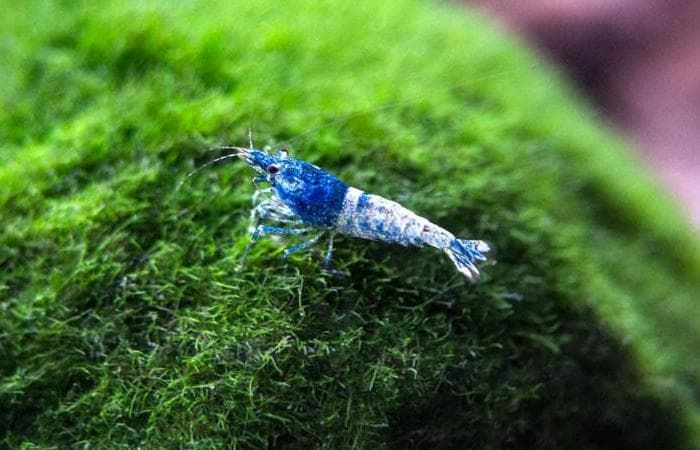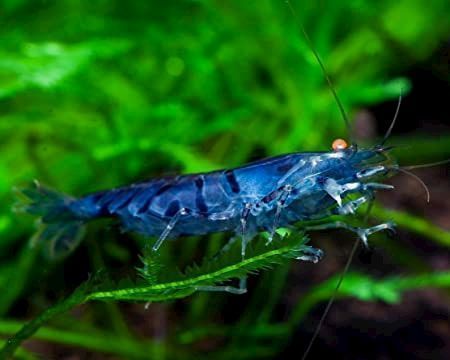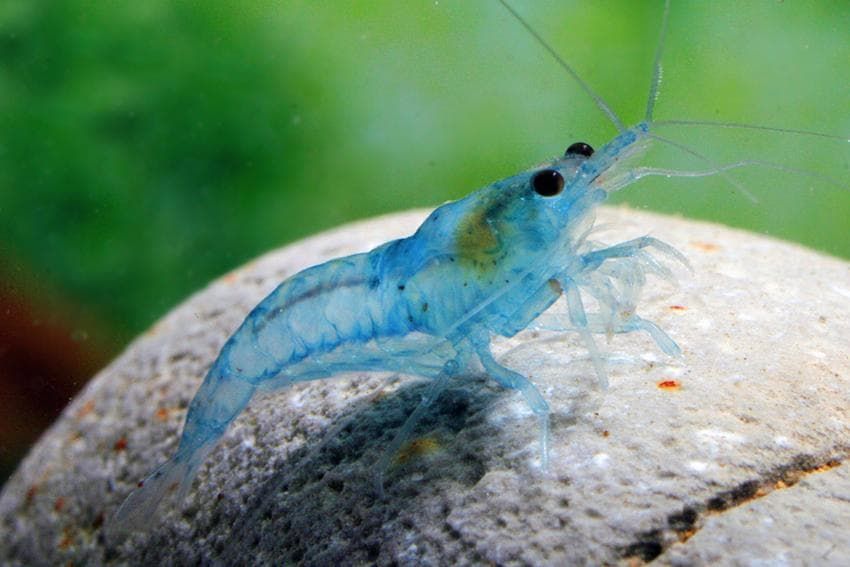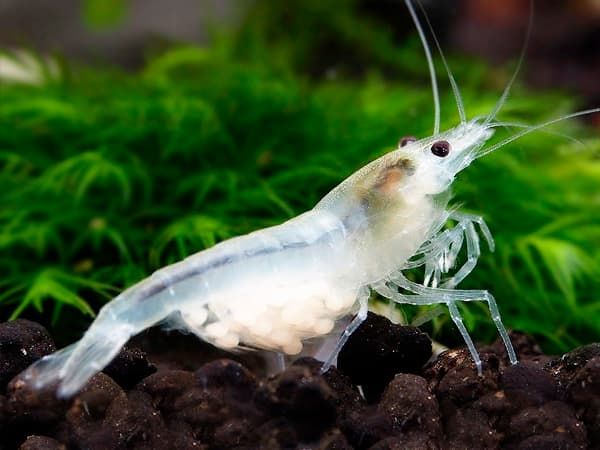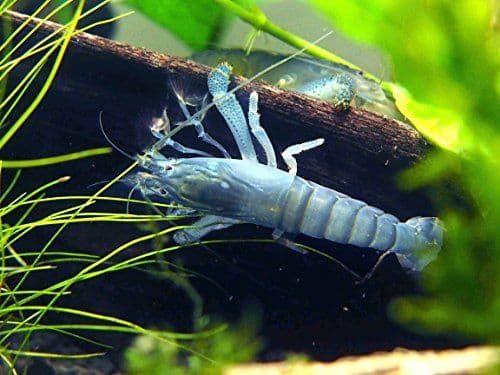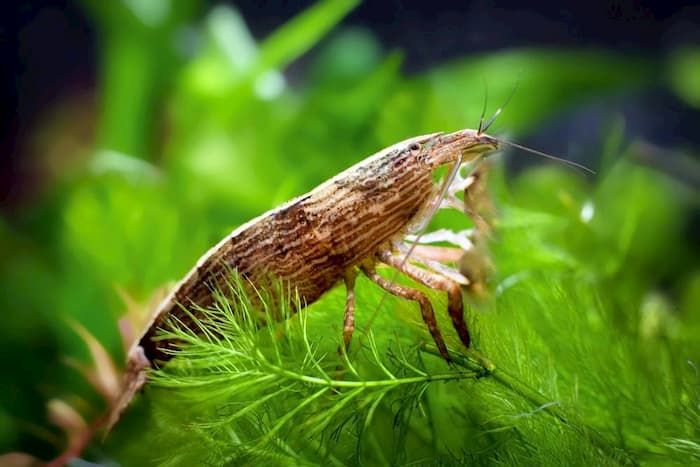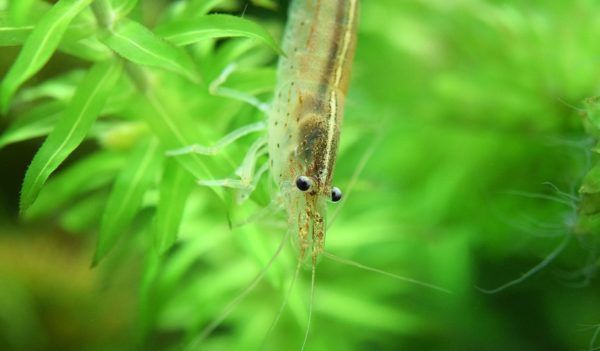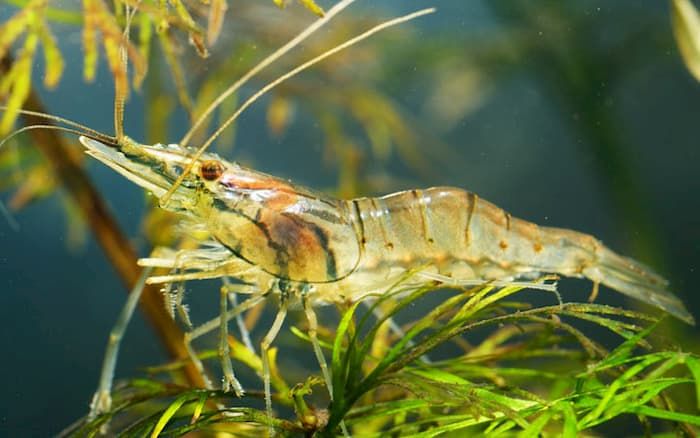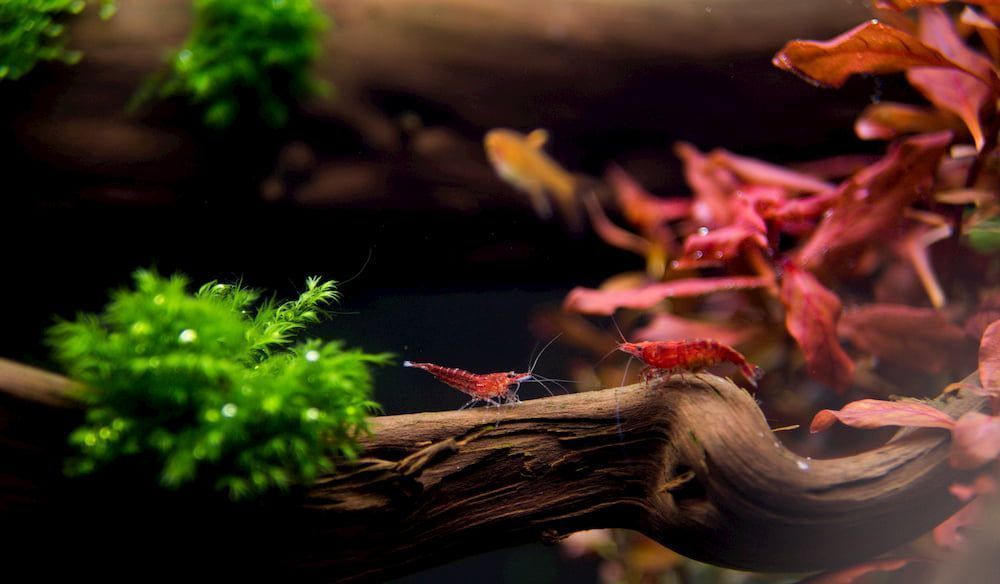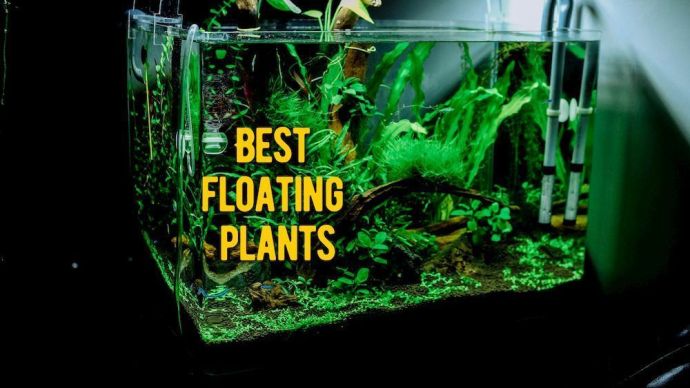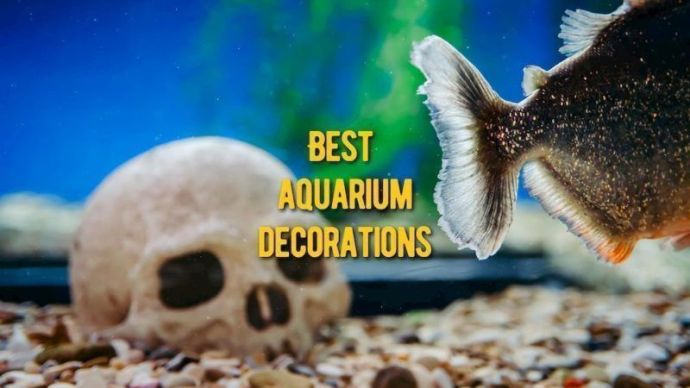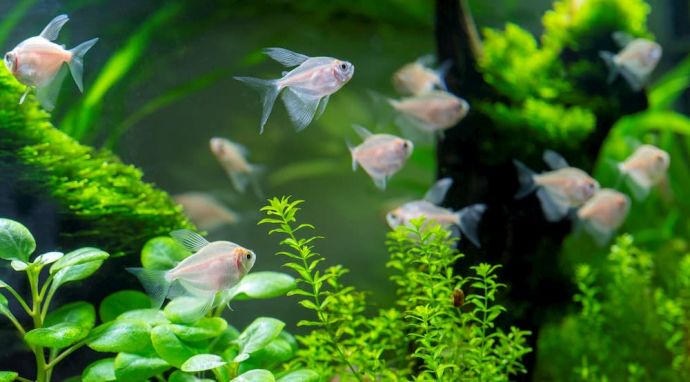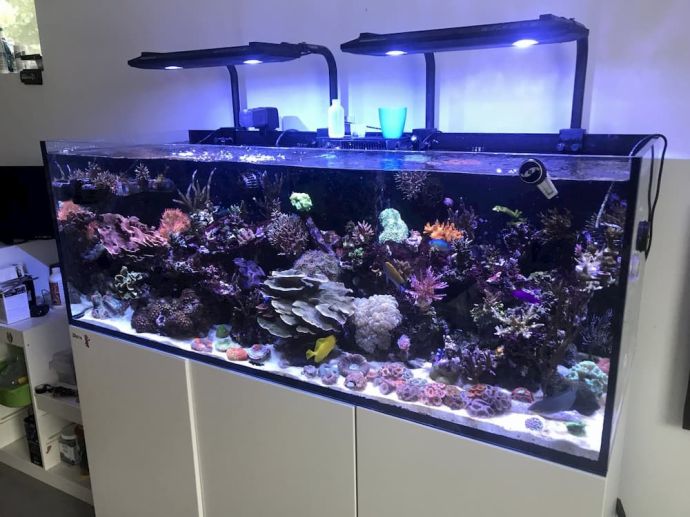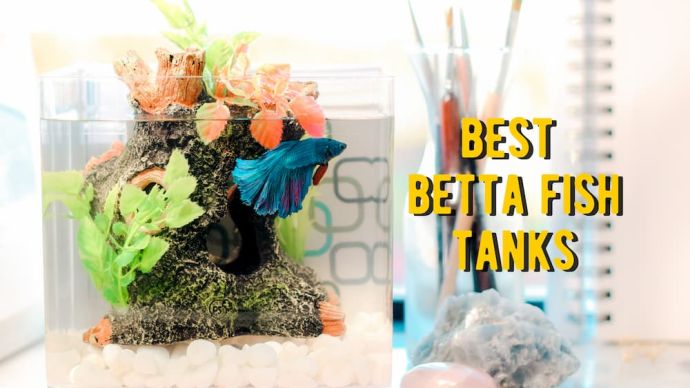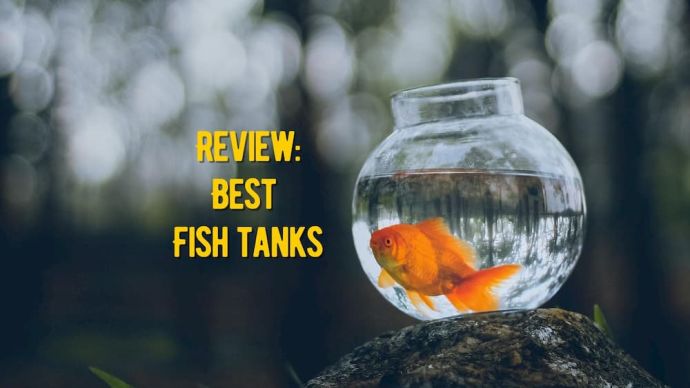The Best Shrimps for Freshwater Aquarium (Review)
Written by:
Author: Casey Fenn
Casey Fenn has 3+ years of experience in writing content. He lives in western North Carolina with his wife, four children, and an assortment of farm animals — including a dog, twenty chickens, a handful of quail, and one milk cow. Casey specializes to write articles in Dog Care, Cat Care, and Tips for Aquarium Owners.
View all 10 articlesLearn about our editorial process and veterinary review board.
Viewed: 1844
Updated on: 06/29/2023
Freshwater shrimps come in varied colors and sizes. These shrimps, just like other animals, have their natural habitats. Unfortunately, many people do not see the need to put these delicate animals in their natural habitat.
There are a lot of advantages that are associated with keeping underwater inhabitants in the aquarium. Asides from the fact that the underwater inhabitants would feel more at ease in such an environment, it also improves their ability to live well and feel more comfortable. Many think underwater inhabitants should be kept in a fish tank instead of an aquarium. This shows that there are a lot of misconceptions about how underwater inhabitants should be maintained. While some species can survive in a fish tank, it is always advisable to keep them in their natural habitat, aquarium.
Our TOP-3 Picks of Shrimp for Freshwater Aquarium
An aquarium is a suitable place for underwater inhabitants to live in. They are the right habitat for them and provide them the opportunity to feed on algae and other insects that appeal to them.
Products | Benefits | Links |
Our #1 Rated | 1. Cherry Shrimp
| |
Our #2 Rated | 2. Amano Shrimp
| |
Our #3 Rated | 3. Crystal Red Shrimp
|
The Best Shrimp for Planted Aquarium Reviews
In this article, the 12 best underwater inhabitants for the freshwater aquarium will be extensively discussed, and insightful information will be given!
1. Cherry Shrimp
This type is necessary to control the growth of algae. They feed on algae and also consume leftover foods. While these underwater inhabitants seem very peaceful, they should not be kept alongside bigger fish to prevent a situation where they will be devoured. The best way to preserve the life of Cherry Shrimp is to house them with small fish. Interestingly, it is quickly taken care of.
Pros
Cons
- It helps to control the presence of algae.
- Very active.
- They do not survive well with older fishes.
2. Amano Shrimp
Just like Cherry Shrimp, Amano Shrimp is famous for controlling algae. Also, they are a very popular specie of underwater inhabitants. They are not usually tall, only about 2 inches (5.08 cm). Thus, they are regarded to be a dwarf species. They can survive in freshwater aquariums with a water temperature of about 70 — 80 degrees Fahrenheit (26.67 °C). Do not hold them captive if you want them to breed correctly.
Pros
Cons
- It is a popular type.
- They breed well in a conducive water temperature.
- They are relatively small.
3. Crystal Red Shrimp
Crystal Red Shrimp, also called Red Bee. It is notable for having a white background and red patches. It is always tricky for novice aquarists to handle these shrimp as they require much maintenance. To get the best from these underwater inhabitants, they must be kept in the appropriate water temperature because they require lots of maintenance. They are an essential part of the nitrogen cycle as well. When plants are planted close to the aquarium, these shrimps absorb excess nitrate in the plant.
Pros
Cons
- Good quality at an affordable rate.
- They are very active.
- They had a small size.
- They require lots of maintenance.
4. Red Rili Shrimp
Red Rili Shrimp is a breed of Red Cherries. It does not grow beyond one inch; as such, they belong to the dwarf species of underwater inhabitants. They rely on the presence of some plants and ornaments to hide while also feeding on algae. If you are desirous of a specie, which you can breed without difficulty, the red rili shrimp is ideal.
Key Features:
- It is a dwarf variety.
- They are regarded as a shy specie.
- It requires a complex aquarium habitat.
- Some plants and ornaments are ideal places for them to seek cover.
- There is little or no difficulty in breeding this specie.
Pros
Cons
- They are capable of adapting to their environment almost immediately.
- They are lively and active.
- They have good colors.
- Ease of maintenance.
- Some buyers complained that the Red Rili Shrimp do not last very long.
5. Blue Bolt Shrimp
It is a blue-and-white variant of the bee shrimp. They can survive in their environment so long as no bigger fishes can eat them up. They will experience no problems or issue breeding if the aquarium is conducive. But to do this, they require the proper water temperature.
Key Features:
- It is a variant of bee.
- It is a peaceful species.
- It breeds quickly when kept at an appropriate water temperature.
Pros
Cons
- With right temperatures, they breed quite easily.
- The water temperature in the aquarium makes it better for them to live well.
- Survive only if their no bigger fishes.
6. Blue Tiger Shrimp
They are also known as orange-eyed blue tiger. It is also known as the orange-eyed blue tiger. It is dark blue colored with black stripes adorning its body. For its survival, the pH of the water is to be kept at 6.0-7.5. Blue Tiger is compatible with peaceful species just as they are. If they are to be kept with fishes, they must be provided with many hiding places to ensure that it survives.
Key Features:
- The temperature of the water should be maintained for them to breed successfully.
- This specie does not experience difficulty in hiding.
Pros
Cons
- Attractive colors that make them unique.
- It is a peaceful and lively specie.
- Not found.
7. Blue Pearl Shrimp
It requires absolute maintenance and care for it to be at its optimum result. Blue Pearl underwater inhabitant thrives well in a planted aquarium. Its feed should be filled with a sinking pallet and blanched vegetables.
Key Features:
- With the right diet and appropriate water temperature, they experience no difficulty in breeding.
- It enjoys feeding on Zucchini.
Pros
Cons
- It does better in a planted aquarium.
- Very delicate species.
- It should be well-fed with sinking pellets and blanched vegetables.
8. Snowball Shrimp
Snowball Shrimp has a translucent color and is the ideal type for beginners. They are easy to care for but require a stable water temperature to function well. If they are kept in a conducive water environment, they will experience no difficulty in breeding.
Key Features:
- As they age, they also shed their exoskeleton.
- It has a translucent color.
Pros
Cons
- They are ideal for beginners and easy to care for.
- They require a stable water temperature for its survival.
9. Vampire Shrimp
This underwater inhabitant is quite similar to the freshwater crayfish. The only difference between the freshwater crayfish and the Vampire Shrimp are filter feeders. They have special fans for catching food particles as they float.
Key Features:
- It can grow to about 6 inches (15.24 cm) and possesses fans for feeding.
- Nonetheless, it sometimes experiences issues in feeding and requires a smaller size of food.
Pros
Cons
- It’s uncommon.
- It possesses a fan for feeding.
- It has a translucent color.
- Not found.
10. Bamboo Shrimp
It is also known as wood shrimp. It has a reddish-brown color and is slightly bigger than the dwarf species. It is easy to differentiate the males from the females. The appearance of their physical structure makes it easy for them to mate. They possess specialized fans for catching food particles and putting foods in their mouths. They can eat a variety of food.
Key Features:
- Presence of specialized fans for catching food and eating.
- They are larger than the dwarf variants.
- The females slightly differ from the male.
Pros
Cons
- It is bigger than the dwarf species.
- It has a unique way of obtaining its food and feeding.
- None.
11. Ghost Shrimp
Ghost Shrimp is transparent and relies on the planted aquarium to hide. It has a small size but is also capable of surviving in any type of environment where it is found. More so, it is capable of hiding with plants and appears unseen as a result of its color.
Key Features:
- This type is able to adapt to its environment without much difficulty as a result of its color.
- They are easily taken care of.
Pros
Cons
- It has a transparent color that helps it stay alive.
- It adapts and strives in a planted aquarium.
- They are relatively small.
12. Indian Whisker Shrimp
Indian Whisker Shrimp is quite similar to the ghost underwater inhabitant, although it is quite larger than it can grow to a whole inch. It is an aggressive species that can attack other species that are kept with it in the same environment. Interestingly, they can survive different water parameters and not be affected in any way.
Key Features:
- It has a transparent color.
- It is larger than the dwarf species.
- Capable of tolerating different parameter of water.
Pros
Cons
- It is bigger than the common type.
- It can survive various water parameter.
- It is very active.
- It is aggressive when kept with others in the same environment.
FAQ
READ MORE: How to take care of freshwater aquarium
🦐 What do freshwater aquarium Shrimp eat?
Well, the answer is quite simple! Freshwater shrimps eat a lot of things. They could feed on algae, worms, dead and living plants, and even other dead shrimps. Secondly, the feeding habits of the shrimps vary according to their type. The dwarf shrimps consume any food offered to it but prefer algae. Bamboo shrimp rely on its filter to help it trap microorganism and foods on its pellet.
🍤 How to keep Shrimp alive in an aquarium?
The survival of the shrimp depends on the level of research conducted. Thus, before taking your shrimps into the aquarium make sure to find out the type of environment that is necessary for its survival. Also, ensure that only one type of specie is kept in one tank. In addition, the water parameters must be steady and there should be lots of hiding spaces in the aquarium as well.
🐟 What to feed aquarium Shrimp?
Aquarium shrimps are mainly omnivores. Aquarium shrimp can be fed with worms, algae, dead plants, living plants, and any fish food.
🐠 How many Shrimp per gallon aquarium?
Dwarf shrimps do not require so much space. At least a 5-gallon aquarium is sufficient to accommodate the aquarium shrimps so long as there is provision for filtration and an avenue to change the water.
🦐 How to catch Shrimp aquarium?
It is not difficult getting hold of the aquarium shrimp. All that you require is the right guide on how to make your own trap. An easy way to do this is to make use of a soda bottle. Cut the top off the bottle and put some gravel into it to weigh it down. Put some shrimp favorite food into the soda bottle and put it carefully into the tank. Of course, the shrimps would get attracted to the food and will find their way into the bottle but will experience difficulty coming out of it.
RELATED ARTICLE: Best Freshwater Aquarium Plants
READ MORE: Best LED Light for Aquarium Plants
 Fish and Aquarium Reviews The Best UV Sterilizers for Freshwater and Saltwater Aquarium
Fish and Aquarium Reviews The Best UV Sterilizers for Freshwater and Saltwater Aquarium - 319
- 0
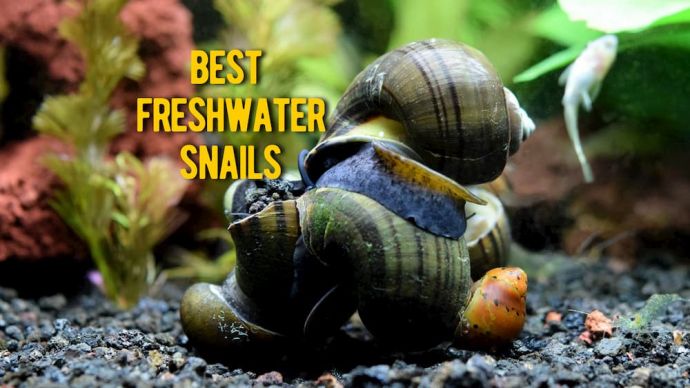 Fish and Aquarium Reviews The Best Aquarium Snails: Freshwater Aquarium Snails Review
Fish and Aquarium Reviews The Best Aquarium Snails: Freshwater Aquarium Snails Review - 391
- 0
 Dog Products & Toys Reviews The 10 Best Brush for Australian Shepherd: Review and Buying Guide
Dog Products & Toys Reviews The 10 Best Brush for Australian Shepherd: Review and Buying Guide - 13353
- 0









